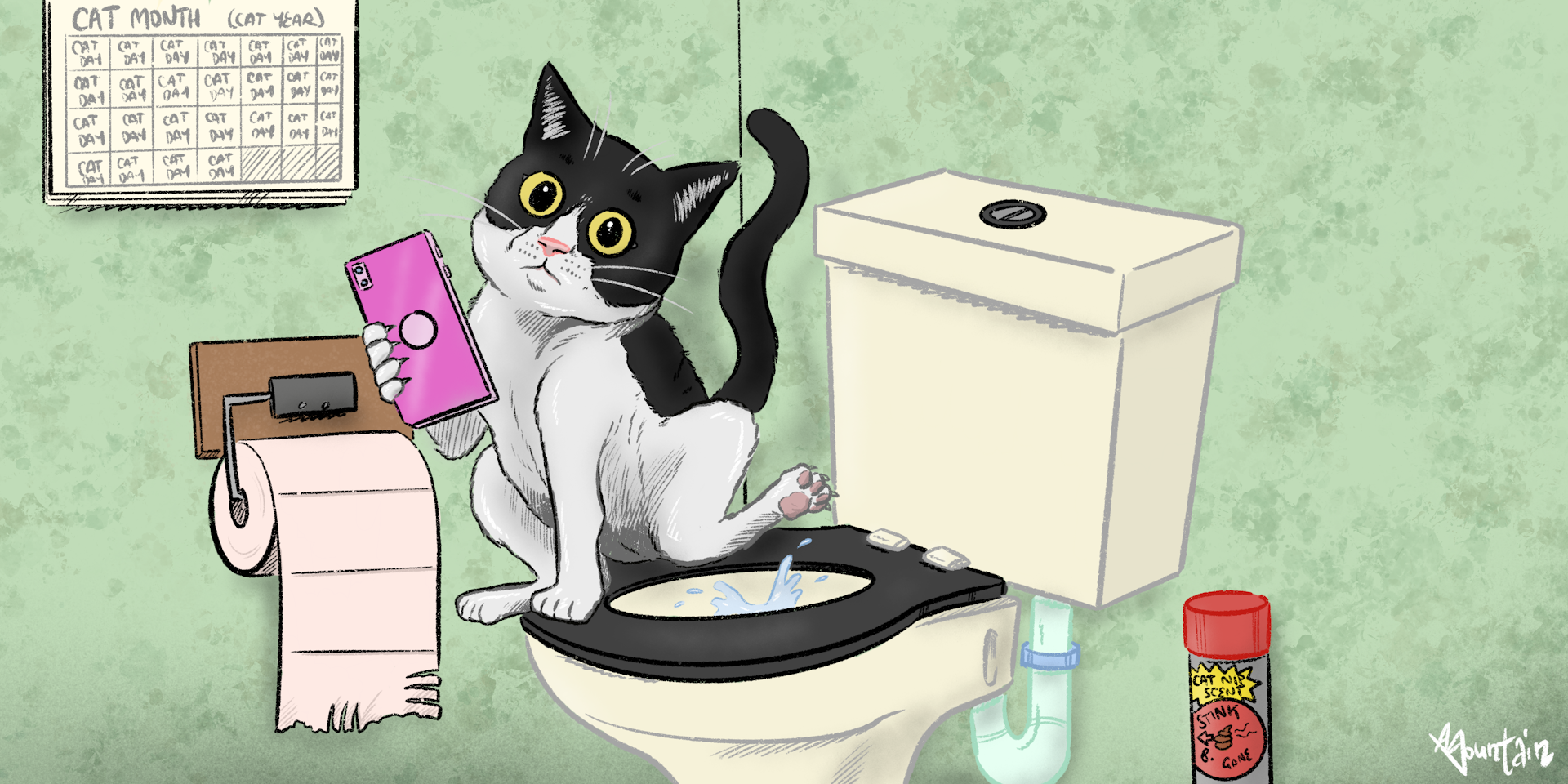Reasons You Should Never Flush Cat Poop Down Your Toilet - Important Information
Reasons You Should Never Flush Cat Poop Down Your Toilet - Important Information
Blog Article
We've come across this great article on How to Dispose of Cat Poop and Litter Without Plastic Bags down the page on the net and figured it made sense to write about it with you here.

Introduction
As feline owners, it's vital to bear in mind how we dispose of our feline pals' waste. While it may appear practical to flush cat poop down the bathroom, this method can have damaging effects for both the setting and human health.
Alternatives to Flushing
The good news is, there are much safer and much more accountable methods to dispose of feline poop. Think about the complying with choices:
1. Scoop and Dispose in Trash
The most common approach of throwing away feline poop is to scoop it right into a biodegradable bag and toss it in the trash. Make certain to use a dedicated clutter scoop and take care of the waste promptly.
2. Use Biodegradable Litter
Opt for biodegradable feline litter made from products such as corn or wheat. These trashes are eco-friendly and can be safely disposed of in the garbage.
3. Hide in the Yard
If you have a yard, consider hiding pet cat waste in a designated area far from vegetable yards and water resources. Make sure to dig deep sufficient to avoid contamination of groundwater.
4. Set Up a Pet Waste Disposal System
Purchase an animal garbage disposal system specifically made for feline waste. These systems utilize enzymes to break down the waste, minimizing odor and environmental influence.
Health Risks
In addition to environmental concerns, flushing feline waste can additionally present wellness threats to people. Feline feces may include Toxoplasma gondii, a bloodsucker that can create toxoplasmosis-- a possibly extreme health problem, specifically for pregnant women and people with weakened immune systems.
Environmental Impact
Flushing cat poop presents damaging microorganisms and parasites right into the water supply, positioning a substantial risk to aquatic environments. These pollutants can adversely impact marine life and concession water high quality.
Verdict
Liable animal possession extends beyond providing food and sanctuary-- it also entails proper waste monitoring. By avoiding flushing feline poop down the commode and going with alternative disposal approaches, we can minimize our ecological impact and shield human wellness.
Why Can’t I Flush Cat Poop?
It Spreads a Parasite
Cats are frequently infected with a parasite called toxoplasma gondii. The parasite causes an infection called toxoplasmosis. It is usually harmless to cats. The parasite only uses cat poop as a host for its eggs. Otherwise, the cat’s immune system usually keeps the infection at low enough levels to maintain its own health. But it does not stop the develop of eggs. These eggs are tiny and surprisingly tough. They may survive for a year before they begin to grow. But that’s the problem.
Our wastewater system is not designed to deal with toxoplasmosis eggs. Instead, most eggs will flush from your toilet into sewers and wastewater management plants. After the sewage is treated for many other harmful things in it, it is typically released into local rivers, lakes, or oceans. Here, the toxoplasmosis eggs can find new hosts, including starfish, crabs, otters, and many other wildlife. For many, this is a significant risk to their health. Toxoplasmosis can also end up infecting water sources that are important for agriculture, which means our deer, pigs, and sheep can get infected too.
Is There Risk to Humans?
There can be a risk to human life from flushing cat poop down the toilet. If you do so, the parasites from your cat’s poop can end up in shellfish, game animals, or livestock. If this meat is then served raw or undercooked, the people who eat it can get sick.
In fact, according to the CDC, 40 million people in the United States are infected with toxoplasma gondii. They get it from exposure to infected seafood, or from some kind of cat poop contamination, like drinking from a stream that is contaminated or touching anything that has come into contact with cat poop. That includes just cleaning a cat litter box.
Most people who get infected with these parasites will not develop any symptoms. However, for pregnant women or for those with compromised immune systems, the parasite can cause severe health problems.
How to Handle Cat Poop
The best way to handle cat poop is actually to clean the box more often. The eggs that the parasite sheds will not become active until one to five days after the cat poops. That means that if you clean daily, you’re much less likely to come into direct contact with infectious eggs.
That said, always dispose of cat poop in the garbage and not down the toilet. Wash your hands before and after you clean the litter box, and bring the bag of poop right outside to your garbage bins.
https://trenchlesssolutionsusa.com/why-cant-i-flush-cat-poop/

I'm very interested by How to Dispose of Cat Poop and Litter Without Plastic Bags and I really hope you enjoyed reading the entire blog post. Make sure you set aside a second to share this content if you appreciated it. Thanks for taking the time to read it.
Book A Service Report this page